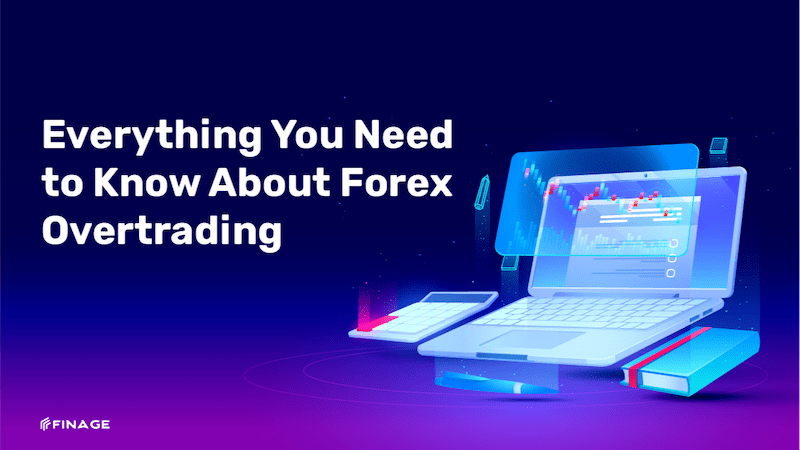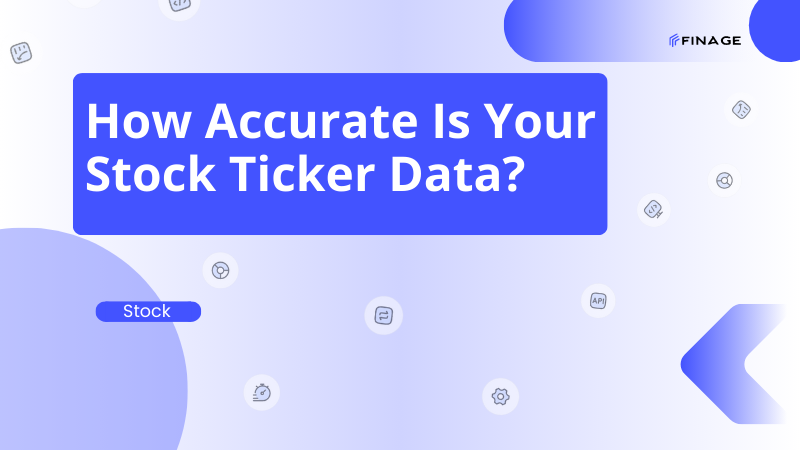Everything You Need to Know About Forex Overtrading
6 min read • October 7, 2022

Introduction
Challenge of Overtrading in Forex
One of the hardest topics for a trader to grasp is the concept of overtrading in the forex market. You will lose a lot of money if you have a tendency to overtrade and you keep doing so.
Every time you enter the market, you expose your money to it, and the more you do so, the more likely it is that your money will leave you. This post will explain what overtrading in forex is and how to reduce it.
What is overtrading in forex?
Overtrading is when you trade excessively frequently, place extraordinarily huge trades, and take unplanned risks. Individual traders are not prohibited from overtrading by laws or regulations, yet it can harm your portfolio.
After experiencing a significant loss or a string of smaller losses over the course of a typically protracted losing streak, traders frequently overtrade. They work harder to make up profits wherever they can, typically by increasing the size and volume of their trades, in an effort to make up for their losses or seek "revenge" on the market.
Unfortunately, several of their trades result in additional losses, and eventually, they lose all of their money. This is one of the key causes of the failure of 95% of forex traders.
What symptoms indicate overtrading?
There are a number of signs that can help you determine whether you are overtrading:
- You are guilty of overtrading if you finish a deal at a loss but secretly feel that you shouldn't have taken the trade. If you're supposed to trade from the standard chart, do you ever find yourself looking at shorter time frames, like the 5-minute chart, and "discovering" better trades?
- Looking at forex charts for an excessive amount of time makes you susceptible to observing an excessive amount of market activity, which can result in overtrading.
- Do you frequently spend hours staring at charts while trying to "push" trade for a setup that is "good enough"?
- The major problem is that many traders are obviously not aware that they are currently overtrading. It is actually possible to lose sight of your trading strategy, become fixated on a less-than-perfect trade position, and become unaware of whether or not you are overtrading.
- You must combat this enemy by developing your trading plan and trading technique when you are not currently in any trades because the emotion-inducing market conditions can be challenging to recognize and even overpowering at times.
So how may forex overtrading be stopped?
You need a prescription in order to prevent overtrading. No, I'm not referring to medications; rather, I'm referring to the ones that prevent you from engaging in impulsive or emotional trading.
The following is a list of steps you must take to stop overtrading:
- Establishing a trading strategy
- The best way to combat excessive trading is to be proactive by creating a trading plan and a trading timetable in advance.
- You might view commerce as a form of conflict. Your analytical or reasoning brain and your emotional brain are essentially at war with each other.
- A systematic forex trading strategy must be developed and followed in order to win this battle.
- If you're reading this and don't have a detailed and practical plan for trading foreign exchange, you're probably trading too much. You must develop and stick to a Forex trading strategy if you want to start and stay on the right trading path.
- All traders must initially practice this in order to develop the proper trading habits, which favor analytical and rational trading over emotional trading.
- Trading the markets inherently brings about emotions and emotional trading, but if you don't plan to fight this reality, you'll almost likely overtrade.
Effective risk management
Your trading strategy must include a risk management approach. This includes the rules and processes you establish to lessen the impact of a mistake.
To avoid overtrading, you should employ two practical risk-management strategies:
Determine your risk for each trade
The amount of money to lose on each deal is entirely up to the trader. For traders who are ready to take on a lot of risks, it might range from 1% to 10%. It only takes five transactions to lose 50% of your trading money if you gamble at 10%, which is why it is typically wise to utilize a lesser amount.
You must make sure the risk percentage is reasonable and that, given the level of risk you are accepting, you can still achieve your trading goals.
Pay attention to the risk-to-reward ratio
You must compare the amount of money at risk to the potential profit in order to determine a trade's risk-reward ratio. Therefore, the risk-to-reward ratio is 1:3 if your highest possible loss on a trade is $100 and your maximum possible profit is $300. A risk-to-reward ratio of 1:1 is popular among traders.
Reduce the daily trade limit
Often, the quantity of deals does not correspond to significant profits. The true difference is determined by how well each trade is executed.
You could be tempted to continue trading after a successful trade and a significant profit, but the market doesn't operate according to your orders. It's not as though you can rub a lamp and a genie will appear and give you the ideal trading plan. After a few profitable trades, you can begin to lose money.
Here's some quick guidance: Decide how many trades you'll be able to open in a single day. As you stick to this approach, keep in mind that a tomorrow is always an option if you feel like opening one more transaction.
Spend a day off
When you lose, you take vulnerable positions and allow greed and rage to rule your actions. Due to their irrational wrath and desire to make things right, some traders overtrade and place too many unsuccessful trades in a single day.
Therefore, taking a break to clear the head is a safer option than becoming a victim of these overtrading causes and effects. Your anger over the most recent loss will lessen as a result, enabling you to think more clearly and execute trades more logically.
Set ground rules
You can prevent placing orders that are inconsistent with your trading strategy by adding rules to the trade entry process. Rules may be created using technical, fundamental, or a combination of the two. For instance, you may establish a rule that only permits trading when the 50-day moving average has passed the 200-day moving average.
You have no power over the market
The market is being attempted to be controlled by too many dealers. If you truly believe you are attempting to influence the market, you must reflect on this and ask yourself hard questions. You will start to think differently once you know that you must develop a trading advantage and only engage in trading when the market demonstrates that control if you comprehend and genuinely accept that you have no control over the market.
We hope that this blog post will be beneficial for you. We will continue to create useful works in order to get inspired by everyone. We are sure that we will achieve splendid things altogether. Keep on following Finage for the best and more.
You can get your Real-Time and Historical Forex Data with Finage free FX Data API key.
Build with us today!
Claim Your Free API Key Today
Access stock, forex and crypto market data with a free API key—no credit card required.

Stay Informed, Stay Ahead
Finage Blog: Data-Driven Insights & Ideas
Discover company news, announcements, updates, guides and more


